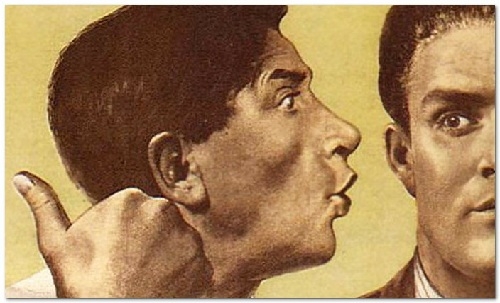Low price - not the main advantage or what to hook, if not the price?
We understand how to attract new customers, not relying solely on a low price. 9 major factors affecting the attractiveness of the proposal.
I do not know where this “secret knowledge” comes from, but almost every “newcomer” considers it his duty to “crush” his competitors. Is this a good idea to “crush” at the price despite all the circumstances? Let us examine some aspects of marketing that will allow us to abandon too low prices.
Each person has values formed under the influence of external circumstances that influence his choice. That is, each group of people has its own understanding of what is their advantage and what is not. Despite this, almost all judge by themselves: I take what is cheaper, so everyone does.
In addition, people's priorities are variable and often change, depending on the situation.
')
The list may be endless, but I will try to express the most frequent variations of what customers are guided by (their priorities at the time of making a decision) when choosing a place where they will buy the goods necessary for them (chaotic order):
If you still want to "crush" the price - be prepared for serious losses and powerful opposition from competitors.
By the way, the price war is the war in which there are winners: customers will be very happy that you started all this, because they will be able to buy their usual goods at a price lower than usual. The downside is that this is a serious risk: it is difficult to predict the reaction of the consumer.
If we are talking about the product - everything is simple. The client compares the prices of a particular product among several stores and selects the best offer. Here the really low price, as they say, “solves”.
When it comes to services, everything is more complicated. Perhaps you noticed that the price of the same service in different places is very different? Something unclear is happening: prices are taken, which is called "from heaven."
I have an example of guys who have two sites. The service is the same (creation of landing pages), but on one site the price is 30 thousand rubles, and on the other one 110 thousand. Under such circumstances, it is not necessary to talk about the need to “crush” the price, especially if the market is saturated.
Isn't it necessary to set the price at 1 ruble to interest the client?

High quality of the product should be combined with a good presentation: you have yet to prove to the client that your quality justifies the price you offer.
It is not necessary to let the client “feel” the quality of your product - it is enough to give him the opportunity to imagine that he has already done it. This opportunity can be given to him by a good description of the benefits of the product, in which it can be clearly demonstrated why "this is" quality is worth "this" money.
You can read more about the methods of product presentation here .
If the quality is low, change the quality, or change the price. The first is better: not only pictures on the site should be of high quality. If your product falls into pixels - it is worth considering.

A lot of promises, difficult (read "abstruse") words, convoluted explanations with a bunch of reservations - the right way to destroy simplicity and clarity. It’s better to write as it is, even if it does not put you in the best light.
If “as it is” puts you in a completely bad light, then lying to clients is certainly not the answer. Take care of improving “as is,” and not embellish. Clients are not robots - they understand and appreciate everything, when they are not trying to be deceived from the very beginning.
Warranties, simple and clear descriptions, the absence of "stars" is a good choice.
Clear descriptions should clearly demonstrate the properties of the product and, most importantly, convey the emotion of the product. For descriptions, you can use text, infographics in images and promotional videos. If you want to simultaneously convey an emotion and clearly demonstrate the advantages of the proposal, I do not advise using the text, as it is extremely ineffective in conveying emotions.
In addition to emotionality, it is important not to look suspicious in the eyes of the client.

There are already a lot of subtleties and components. For each field of activity there is a definition of what is a good service. Although, there are the most basic properties of "good service", which are applicable to any area:

Everything is simple here: the “fatter” your cases - the higher your confidence in you, because large customers would not turn to bad companies, right?
But not everyone has the opportunity to receive an order from Gazprom-Media.
Enough to use the usual reviews. Again, artificial feedback should not be used, because it is immediately apparent from them that they are artificial. Combined with poor confirmations of the “reality” of reviews - this only gives the opposite effect.

After working with a client (whether to provide a service or sell a product) just ask him to leave a review. If the review turns out to be bad - do not rush to delete it. This is a simple, but wrong decision. Better take feedback and use to improve your product.
If we are talking about a product, then in compensation, offer the client a bonus so that all those people who will watch the reviews can see that you are ready to compensate for the inconvenience and work on yourself.
Your customers can be great advertising. If people around you see that many people use your services / consume your product - your chances increase. This is called "social confirmation." It is very important for people to see that someone already uses your services and that they will not have to be pioneers.
A good example is some soda. The label is glued so that the hand while holding does not close the logo (if the person is right handed).

Or cigarette packs. Because of their design, people have to get a pack to get a cigarette. Thus, people around you see which brand of cigarettes you prefer.
It is worth noting that even though each person has his own concept of “beauty” - there is some general tendency towards sympathy with respect to certain elements, inherent in each separate group of people. Find your group of people. Some people call this their “target audience.” You yourself must determine what your target audience preferences are in order for them to like. You can not please everyone, but you can please a particular group of people.
A simple example: kittens. Almost everyone loves kittens, so they are actively used to solicit the grace of the audience.

Again, social confirmation. The difference is that in the case of acquaintances it works more efficiently than in the case of strangers, because if you know a person, then you have a formed opinion about how much your tastes and values coincide.
Word of mouth - everyone knows how it works.

9. Some "character" of the brand
The “character” of the brand includes everything described above, not to mention the fact that it was not described at all. In this article, I can only add that the feeling of “property” is very important for the client (to feel “his”).
Well, you know, when you bought some of the products of your favorite brand and feel that you are “yours.” It’s as if you are a part of a brand, and a brand is a part of you, and it’s also like “your boyfriend”.
He explained it this way, but ... Marlboro raised sales when the associative bunch “Marlboro-coolness, cowboys” appeared in the Americans.

Or "Beer for real men" - this also creates associations for men: "I drink this beer like a real man."
This may not seem to work, but it works.
As you can see, there are plenty to choose from.
Crush the price - the most "clumsy" and expensive method that does not always work. It is worth noting that not every entrepreneur is able to compete with the major players in their niche, who at the expense of a good turnover can afford extra costs and put up an impossible low price.
If you set a price that you simply cannot afford, you can put all your belongings (cactus and framed photos) in a cardboard box and leave the market.
You need to put the price that will bring you net profit, and not endless revenue. Of course, if you are not “Uber” (There is a general, but there is a particular. So I am interested in most cases, but not in private ones).
This does not mean that you need, to put it mildly, “to keep in mind” the pricing policy in the market. In any niche there is a gap between the maximum and minimum price among competitors, and in order to “move” the framework of this gap in a big way, you need to have good reasons in the form of several advantages.
If you have a desire to help us improve the quality of the content and / or correct the author - write to me or leave comments;)
I do not know where this “secret knowledge” comes from, but almost every “newcomer” considers it his duty to “crush” his competitors. Is this a good idea to “crush” at the price despite all the circumstances? Let us examine some aspects of marketing that will allow us to abandon too low prices.
An advantage is a subjective concept depending on the needs of the client.
Each person has values formed under the influence of external circumstances that influence his choice. That is, each group of people has its own understanding of what is their advantage and what is not. Despite this, almost all judge by themselves: I take what is cheaper, so everyone does.
In addition, people's priorities are variable and often change, depending on the situation.
')
The list may be endless, but I will try to express the most frequent variations of what customers are guided by (their priorities at the time of making a decision) when choosing a place where they will buy the goods necessary for them (chaotic order):
1. Lowest Price
If you still want to "crush" the price - be prepared for serious losses and powerful opposition from competitors.
By the way, the price war is the war in which there are winners: customers will be very happy that you started all this, because they will be able to buy their usual goods at a price lower than usual. The downside is that this is a serious risk: it is difficult to predict the reaction of the consumer.
If we are talking about the product - everything is simple. The client compares the prices of a particular product among several stores and selects the best offer. Here the really low price, as they say, “solves”.
When it comes to services, everything is more complicated. Perhaps you noticed that the price of the same service in different places is very different? Something unclear is happening: prices are taken, which is called "from heaven."
I have an example of guys who have two sites. The service is the same (creation of landing pages), but on one site the price is 30 thousand rubles, and on the other one 110 thousand. Under such circumstances, it is not necessary to talk about the need to “crush” the price, especially if the market is saturated.
Isn't it necessary to set the price at 1 ruble to interest the client?

2. High quality product
High quality of the product should be combined with a good presentation: you have yet to prove to the client that your quality justifies the price you offer.
It is not necessary to let the client “feel” the quality of your product - it is enough to give him the opportunity to imagine that he has already done it. This opportunity can be given to him by a good description of the benefits of the product, in which it can be clearly demonstrated why "this is" quality is worth "this" money.
You can read more about the methods of product presentation here .
If the quality is low, change the quality, or change the price. The first is better: not only pictures on the site should be of high quality. If your product falls into pixels - it is worth considering.

3. Simplicity and clarity, a sense of transparency
A lot of promises, difficult (read "abstruse") words, convoluted explanations with a bunch of reservations - the right way to destroy simplicity and clarity. It’s better to write as it is, even if it does not put you in the best light.
If “as it is” puts you in a completely bad light, then lying to clients is certainly not the answer. Take care of improving “as is,” and not embellish. Clients are not robots - they understand and appreciate everything, when they are not trying to be deceived from the very beginning.
Warranties, simple and clear descriptions, the absence of "stars" is a good choice.
Clear descriptions should clearly demonstrate the properties of the product and, most importantly, convey the emotion of the product. For descriptions, you can use text, infographics in images and promotional videos. If you want to simultaneously convey an emotion and clearly demonstrate the advantages of the proposal, I do not advise using the text, as it is extremely ineffective in conveying emotions.
In addition to emotionality, it is important not to look suspicious in the eyes of the client.

4. Good service
There are already a lot of subtleties and components. For each field of activity there is a definition of what is a good service. Although, there are the most basic properties of "good service", which are applicable to any area:
- Operational Feedback
- Compliance with all terms of the contract
- Providing only reliable information
- Polite staff, sincerely willing to help the client in any situation
- A clear desire to do more than promised
- A good sense of humor from support agents is welcome.

5. Good reviews
Everything is simple here: the “fatter” your cases - the higher your confidence in you, because large customers would not turn to bad companies, right?
But not everyone has the opportunity to receive an order from Gazprom-Media.
Enough to use the usual reviews. Again, artificial feedback should not be used, because it is immediately apparent from them that they are artificial. Combined with poor confirmations of the “reality” of reviews - this only gives the opposite effect.

After working with a client (whether to provide a service or sell a product) just ask him to leave a review. If the review turns out to be bad - do not rush to delete it. This is a simple, but wrong decision. Better take feedback and use to improve your product.
If we are talking about a product, then in compensation, offer the client a bonus so that all those people who will watch the reviews can see that you are ready to compensate for the inconvenience and work on yourself.
6. Brand Prevalence
Your customers can be great advertising. If people around you see that many people use your services / consume your product - your chances increase. This is called "social confirmation." It is very important for people to see that someone already uses your services and that they will not have to be pioneers.
A good example is some soda. The label is glued so that the hand while holding does not close the logo (if the person is right handed).

Or cigarette packs. Because of their design, people have to get a pack to get a cigarette. Thus, people around you see which brand of cigarettes you prefer.
7. Design / degree of "beauty"
It is worth noting that even though each person has his own concept of “beauty” - there is some general tendency towards sympathy with respect to certain elements, inherent in each separate group of people. Find your group of people. Some people call this their “target audience.” You yourself must determine what your target audience preferences are in order for them to like. You can not please everyone, but you can please a particular group of people.
A simple example: kittens. Almost everyone loves kittens, so they are actively used to solicit the grace of the audience.

8. Reviews of friends
Again, social confirmation. The difference is that in the case of acquaintances it works more efficiently than in the case of strangers, because if you know a person, then you have a formed opinion about how much your tastes and values coincide.
Word of mouth - everyone knows how it works.

9. Some "character" of the brand
The “character” of the brand includes everything described above, not to mention the fact that it was not described at all. In this article, I can only add that the feeling of “property” is very important for the client (to feel “his”).
Well, you know, when you bought some of the products of your favorite brand and feel that you are “yours.” It’s as if you are a part of a brand, and a brand is a part of you, and it’s also like “your boyfriend”.
He explained it this way, but ... Marlboro raised sales when the associative bunch “Marlboro-coolness, cowboys” appeared in the Americans.

Or "Beer for real men" - this also creates associations for men: "I drink this beer like a real man."
This may not seem to work, but it works.
As you can see, there are plenty to choose from.
Crush the price - the most "clumsy" and expensive method that does not always work. It is worth noting that not every entrepreneur is able to compete with the major players in their niche, who at the expense of a good turnover can afford extra costs and put up an impossible low price.
If you set a price that you simply cannot afford, you can put all your belongings (cactus and framed photos) in a cardboard box and leave the market.
You need to put the price that will bring you net profit, and not endless revenue. Of course, if you are not “Uber” (There is a general, but there is a particular. So I am interested in most cases, but not in private ones).
This does not mean that you need, to put it mildly, “to keep in mind” the pricing policy in the market. In any niche there is a gap between the maximum and minimum price among competitors, and in order to “move” the framework of this gap in a big way, you need to have good reasons in the form of several advantages.
If you have a desire to help us improve the quality of the content and / or correct the author - write to me or leave comments;)
Source: https://habr.com/ru/post/294584/
All Articles